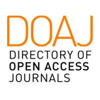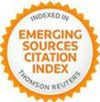Abstract
Keywords
Full Text:
PDFDOI: http://dx.doi.org/10.2423/i22394303v15Sp93
References
Accogli, R. (2009). Piante da fibra e piante tintorie spontanee nell’economia del Salento (Puglia). Geotema. 2009 Anno Internazionale delle Fibre Naturali. 5(35-36), 99-102. Organo Ufficiale Associazione Geografi Italiani. ISSN 1126-7798
Accogli, R., & Marchiori, S. (2010). Ricerche etnobotaniche nell’agro di Fasano (Brindisi-Puglia). In IV Convegno Nazionale “Piante Mediterranee. Le potenzialità del territorio e dell’Ambiente (p. 160). Tipografia GraficaSud Policoro (MT). ISBN: 88-900347-4-2
Accogli, R., & Medagli, P. (2014). Erbe spontanee salentine. Guida al riconoscimento e all’uso delle piante alimentari tradizionali. Lecce: Edizioni Grifo, ISBN 9788898175642
Accogli, R., Mele, C., Minonne, F., Medagli, P., & Marchiori, S. (2007). Utilizzo delle piante spontanee mangerecce nel Salento. In 2° Convegno Nazionale “Piante Mediterranee”, (pp. 520-528). Tipolitografia Aurora di Cerrito Canicatti.
Atanasov, A.G., Waltenberger, B., Pfershcy-Wenzig, E.M., Linder, T., Wawrosch, C., Uhrin, P., Temml, V., Wang, L., Schwaiger, S., Heiss, E.H., Rollinger J.M., Schuster, D., Breuss, J.M., Bochkov V., Mihovilovic, M.D., Kopp, B., Bauer, R., Dirsch, V.M., & Stuppner, H. (2015). Discovery and resupply of pharmacologically active plantderived natural products; a review. Biotechnol Advances, 33(8), 1582-1614. https://doi.org/10.1016/j.biotechadv.2015.08.001
Atzei, A.D. (2017). Le piante nella tradizione popolare della Sardegna. Sassari, Italy: Carlo Delfino Editore.
Azeñas V., Janner I., Medrano H., & Gulías, J. (2018). Performance evaluation of five Mediterranean species to optimize ecosystem services of green roofs under water-limited conditions. Journal of Environmental Management, 212, 236-247. https://doi.org/10.1016/j.jenvman.2018.02.021
Ballerini, L. (2008). Erbe da mangiare. Milano, Italia: Arnoldo Mondadori Editore.
Baharvand-Ahmadi, B., Bhahmani, M., Tajeddini, P., Rafieian-Kopaei M., & Naghdi N. (2016). An ethnobotanical study of medicinal plants administered for the treatment of hypertension. J. Renal Inj Prev. 2016, 5(3), 123-128. https://doi.org/10.15171/jrip.2016.26
Barbosa B., Lima A.S., Vieira P., Dias S., Tinoco M.T., Barroso G., Pedro G., Figueiredo A.C., & Mota M. (2010). Nematicidal activity of essential oils and volatiles derived from Portuguese aromatic flora against the pinewood nematode, Bursaphelenchus xylophilus. Journal of Nematology 42(1), 8–16.
Beeby, E., Magalhaes. M, Pocas. J, Collins, T., Lemos, M.F.L., Barrose, L., Ferreirae, I.C.F.R., Cabralb, C., & Piresa, I. M. (2020). Secondary metabolites (essential oils) from sand-dune plants induce cytotoxic effects in cancer cells. Journal of Ethnopharmacology, 258 . https://doi.org/10.1016/j.jep.2020.112803
Biscotti, N., Bonsanto, D., & Del Viscio, G. (2018). The traditional food use of wild vegetables in Apulia (Italy) in the light of Italian ethnobotanical literature. Italian Botanist 5, 1–24. https://doi.org/10.3897/italianbotanist.5.22297
Boni, U., Patri, G. (1980). Le Erbe Medicinali Aromatiche Cosmetiche. Bologna, Italia: Fabbri Editori.
Bulgari, R., Morgutti, S., Cocetta, G., Negrini, N., Farris, S., Calcante, A., Spinardi, A., Ferrari, E., Mignani, I., Oberti, R., & Ferrante, A. (2017). Evaluation of borage extracts as potential biostimulant using a phenomic, agronomic, physiological, and biochemical approach. Frontiers in Plant Science, Original Research june 2017 Vol 8. https://doi.org/10.3389/fpls.2017.00935
Capasso, F, Girandolini, G, & Izzo, A. A.. (2006). Fitoterapia: Impiego razionale delle droghe vegetali. Milano, Italia: Springer Science & Business Media.
Ditonno, N., Lamusta, S., Nardone, D. (1997). Sapori e aromi da piante e frutti spontanei della Puglia peninsulare. Brindisi, Italia: Ed. Amici della <>
Foster, R.H., Hardy, & G., Alany, R.G. (2016). Borage oil in the treatment of atopic dermatitis. Nutrition 26 (7-8). 708-718. doi: 10.1016/j.nut.2009.10.014
Garbari, F. (1996). La scomparsa delle specie vegetali in Italia. Aspetti Biologici della Conservazione. Riv. Mus. Civ. Sc. Nat. “E. Caffi”. BERGAMO, 18 (1996) pp. 5.12 ISSN 0393-8700
Gastaldo, P. (1987). Compendio della flora officinale italiana. Padova, Italia: Piccin Nuova Libraria S.p.A.
Ghasemian, M., Owlia, S., & Bagher Owlia, M. (2016). Review of Anti-Infiammatory Herbal Medicines. Adv Pharmacol Sci. 2016, 1-11. doi.org/10.1155/2016/9130979
Gil, L., Pinya, S., Tejada, S., Capó, X., & Sureda, A. (2019). Antioxidant Defenses in Wild Growing Halophyte Crithmum maritimum from Inland and Coastline Populations Chem. Biodiversity 2019, 16 (1) doi: 10.1002/cbdv.201800448
Gilani, A.H., Bashir, S., & Khana, A. (2007). Pharmacological basis for the use of Borago officinalis in gastrointestinal, respiratory and cardiovascular desorders. Journal of Ethnopharmacology 114 (3), 393-399. doi: 10.1016/j.jep.2007.08.032
Gnocchi, D., Cesari, G., Calabrese, G.J., Capone, R., Sabbà C., & Mazzocca, A. (2020). Inhibition of Hepatocellular Carcinoma Growth by Ethyl Acetate Extracts of Apulian Brassica oleracea L. and Crithmum maritimum L. Plant Foods for Human Nutrition (2020), 75(1), 33–40. https://doi.org/10.1007/s11130-019-00781-3
Gnocchi, D., Del Coco, L., Girelli, C. R., Castellaneta, F., Cesari, G., Sabbà, C., Fanizzi, F.P., & Mazzocca, A. (2021). 1H‑NMR metabolomics reveals a multitarget action of Crithmum maritimum ethyl acetate extract in inhibiting hepatocellular carcinoma cell growth Nature Research. Scientific Reports (2021), 11(1). doi.org/10.1038/s41598-020-78867-1
Guarrera, P.M. (2006). Usi e tradizioni della flora italiana. Medicina popolare ed etnobotanica. Roma, Italia, Aracne Editrice S.r.l., ISBN 978-88-548-0964-2
Jallali, I., Zaouali, Y., Missaoui, I., Smeoui, A., Abdelly, C., & Ksouri, R. (2014). Variability of antioxidant and antibacterial effects of essential oils and acetonic extracts of two edible halophytes: Crithmum maritimum L. and Inula crithmoïdes L. Food Chemistry 145 (2014), 1031–1038. doi: 10.1016/j.foodchem.2013.09.034
Kweka, E.J., Senthilkumar, A., & Venkatesaluz, V. (2012). Toxicity of essenzial oil from Indian borage on the larvae of the African malaria vector mosquito, Anopheles gambiae. Parasites & Vectors 2012. doi: 10.1186/1756-3305-5-277
Lanzara, P. (1978). Piante medicinali. Milano, Italia: Arnoldo Mondadori Editori S.p.A.
Lequeux, C., Lhoste, A., Rovere, M.R., Montastier, C., & Damour, O. (2011). Model of in vitro healing to test the influence of dedifferentiated Crithmum maritimum cells on dermal repair and epidermal regeneration. Skin Pharmacol Physiol 2011, 24 (2), 75-80. doi: 10.1159/000321991
Lozano-Baena, M.D., Tasset, I., Muñoz-Serrano, A., Alonso-Moraga, A., & de Haro-Bailón A. (2016). Cancer prevention and health benefices of traditionally consumed Borago officinals plants. Nutrients 8(1), 1-48. doi: 10.3390/nu8010048
Marchiori, S., & Tornadore, N. (1988). Aspetti quantitativi e qualitativi della Flora del Salento (Puglia meridionale – Italia). Thalassia Salentina 18, pp. 21-46 Lecce, Italy: Edizioni Grifo
Meda, P. (1996). Guida agli Orti e Giardini Botanici. Milano, Italia: Editoriale Giorgio Mondadori
Meot-Duros, L., & Magné, C. (2009). Antioxidant activity and phenol content of Crithmum maritimum L. leaves. Plant Physiology and Biochemistry 47(1), 37–41. doi: 10.1016/j.plaphy.2008.09.006
Mele, C., Medagli, P., Accogli, R., Beccarisi, L., Albano, A., & Marchiori, S. (2006). Flora of Salento (Apulia, Southeastern Italy): an annotated checklist. Flora Mediterranea 2006, 16, pp.193-245. ISSN 1120-4052
Mekenic, I.G., Blazĕvic, I., Mudnic, I., Burcǔl, F., Grga, M., Skroza, D., Jercić, I., Ljubenkov, I., Boban, M., Milos, M., & Katalinić, V. (2016). Sea fennel (Crithmum maritimum L.): phytochemical profile, antioxidative, cholinesterase inhibitory and vasodilatory activity. J Food Sci Technol (July 2016) 53(7), 3104–3112. doi: 10.1007/s13197-016-2283-z
Montefusco, A., Semitaio, G., Marrese, P.P., Iurlaro, A., De Caroli, M., Piro, G., Dalessandro, G., & Lenucci, M.S. (2015). Antioxidants in Varieties of Chicory (Cichorium intybus L.) and Wild Poppy (Papaver rhoeas L.) of Southern Italy. Journal of Chemisty, 2015, 923142. Doi: 10.1155/2015/923142
Mustapha, M.B., Zardi-Bergaoui, A., Chaieb, I., Flamini, G., Ascrizzi, R., & Jannett, H.B. (2020). Chemical Composition and Insecticidal Activity of Crithmum Maritimum L. Essential Oil against Stored-Product Beetle Tribolium castaneum- Chem. Biodiversity 2020, 17(3), 1-13. Doi: 10.1002/cbdv.201900552 e1900552
Nardone, D., Ditonno, N., & Lamusta, S. (2012). Fave e favelle. Le Piante della Puglia peninsulare nelle voci dialettali in uso e di tradizione. Aforismi. Modi di dire. Farmaci. Cosmetici. Lecce, Italia: Centro di Studi Salentini,
Palombi, D. (2005). Erbario Salentino. Lecce, Italia: Edizioni Grifo
Pereira, C.G., Barreira, L., da Rosa Neng, N., Nogueira, J.M.F., Marques, C., Santos, T., Varela J., & Custodio, L. (2017). Searching for new sources of innovative products for the food industry within halophyte aromatic plants: In vitro antioxidant activity and phenolic and mineral contents of infusions and decoctions of Crithmum maritimum L. Food and Chemical Toxicology 107, 581-589. Doi: 10.1016/j.fct.2017.04.018
Pereira, A. G., Fraga-Corral, M., García-Oliveira, P., Jimenez-Lopez, C., Lourenço-Lopes, C., Carpena, M., Otero, P., Gullón, P., Prieto, M. A., & Simal-Gandara, J. (2020). Culinary and nutritional value of edible wild plants from northern Spain rich in phenolic compounds with potential health benefits. Food Funct., 2020, 11(10), 8493-8515. doi: 10.1039/d0fo02147d.
Ranfa, A. (2004). Piante amiche e nemiche dell’uomo. Perugia, Italia: ali&no Editrice
Renna, M. (2018). Reviewing the Prospects of Sea Fennel (Crithmum maritimum L.) as Emerging Vegetable Crop. Plants 7(4): 92. doi:10.3390/plants7040092
Rodriguez-Magaña, M.P., Codero-Pérez, P., Rivas-Morales, C., Oranday-Cárdenas, M., Moreno-Peña, D.P., Garcia-Hernàndez, D.G., & Leos-Rivas, C. (2019). Hypoglycemic Activity of Tilia Americana, Borago officinalis, Chenopodium nuttalliae, and Piper sanctum on Wistar Rats. Journal of Diabetes Research, 2019, doi: 10.1155/2019/7836820.
Samani, M.A., Bahmani, M., & Rafieian-Kopaei, M. (2014). The chemical composition, botanical characteristic and biological activities of Borago officinalis: a review. Asian Pac J Trop Med 2014, 7(Suppl 1), 22-28. Doi: 10.1016/S1995-7645(14)60199-1
Seo, S.A., Park, B., Hwang, E., Park, S.Y., & Yi, T.H (2018). Borago officinalis L. attenuates UVB-induced skin photodamage via regulation of AP-1 and Nrf2/ARE pathway in normal human dermal fibroblasts and promotion of collagen synthesis in hairless mice. Experimental Gerontology 107 (2018), 178-186. Doi: 10.1016/j.exger.2018.02.017
Shin, J.A., Sun, M., & Jeong, J.M. (2020). Borage oil treated with immobilized lipase inhibits melanogenesis. Lipids (2020) 55(6), 649-659. Doi: 10.1002/lipid.12266
Singh, H., Du, J., & Yi, T.H., (2017). Green and rapid synthesis of silver nanoparticles using Borago officinalis leaf exstract: anticancer and antibacterial activities. Artificial Cells, Nanomedicine and Biotechnology, 2017, 45(7), 1310-1316. Doi: 10.1080/21691401.2016.1228663
Tabari, M.A., Rostamib, A., Khodashenasb, A., Maggic, F., Petrellic, R., Giordanid, C., Tapondjouf, L.A., Papag, F., Zuog Cianfaglioneh, K., & Youssefij, M. R. (2020). Acaricidal activity, mode of action, and persistent efficacy of selected essential oils on the poultry red mite (Dermanyssus gallinae). Food and Chemical Toxicology 138: 111207. doi: 10.1016/j.fct.2020.111207
Valzano, V., & Sartor, G. (2021). Dante as an ecologist and poet in the world. 'Divine illustrations' by Gustave Doré. An open access multimedia project. SCIRES-IT - SCIentific RESearch and Information Technology, 11(2), 41-56. DOI 10.2423/i22394303v11n2p41.
Valzano, V., & Sartor, G. (2021). In viaggio con Dante. ‘Vago già di cercar dentro e dintorno’. Un itinerario virtuale ad accesso aperto. Lecce: ClioEdu. Retrieved from www.clioedu.it/in-viaggio-con-dante
Valzano, V. Sartor, G., Biliotti, S., Biliotti, E., Valzano, A., & D’Arpa, A. (2021). Dante ecologo e poeta nel mondo. Illustrazioni “divine” di Gustave Doré. Un Progetto multimediale ad accesso aperto. Video-documentario. Lecce: CLIOedu ed. Retrieved from https://www.clioedu.it/dante-ecologo-poeta.
Valzano, V., Sartor, G., Romani, M., & Accogli, R. (2022). Dante's journey in the Botanical Garden. SCIRES-IT - SCIentific RESearch and Information Technology, 12(1), 67-76. DOI 10.2423/i22394303v12n1p67
Ventura, Y., Myrzabayeva, M., Alikulov Z., Omarov, R., Khozin-Goldberg, I., Sagi, M. (2014). Effects of salinity on flowering, morphology, biomass accumulation and leaf metabolites in an edible halophyte. Special Issue: Physiology and Ecology of Halophytes-Plants Living in Salt-Rich Environments. 2014, AoB PLANTS, 1-11. Doi: 10.1093/aobpla/plus053
WEB SOURCES
MEDLINE, Retrieed from https://www.nlm.nih.gov/medline/medline_home.html
PubMed. Retrieed from https://pubmed.ncbi.nlm.nih.gov/
Article Metrics
Metrics powered by PLOS ALM
Refbacks
- There are currently no refbacks.
Copyright (c) 2025 Rita Accogli

This work is licensed under a Creative Commons Attribution-NonCommercial-NoDerivatives 4.0 International License.
SCIRES-IT, e-ISSN 2239-4303
Journal founded by Virginia Valzano





